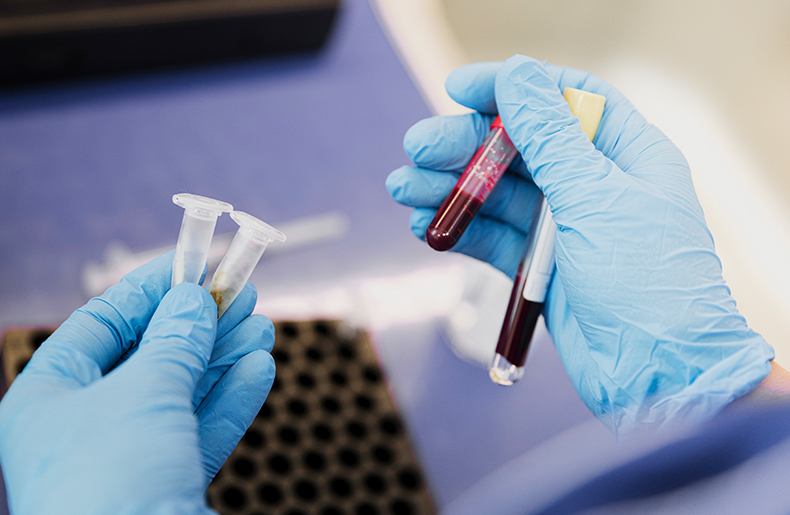
Here is another article dedicated for Blood Cancer Awareness Month. In this blog post, we will take a closer look at the factors that decide which treatment option to consider for blood cancer and the treatment options available for blood cancer patients.
There are a range of factors that will determine the blood cancer treatment regimes that a person will be placed on. These factors include:
- The type of blood cancer – Some treatments are more effective at curing certain types of blood cancers. The primary physician who is treating the patient will recommend the best option for the specific type of blood cancer the patient has.
- The cancer’s sub type and stage – Many blood cancers have different subtypes. Some are chronic (taking a long time to develop) while others are acute (they will progress quickly). This can determine which treatment regime should be used. The stage of cancer’s stage will also play a role. For example, if a person’s cancer has already spread from the blood to an organ, the patient may require additional forms of cancer treatment that specifically target that organ.
- The patient’s health – If a patient is in poor health, certain treatments may be too dangerous to perform. Other factors like pregnancy, age, and white cell count will play a role in determining which treatment is used. If the patient already has a serious infection, it can also determine which treatments are suitable.
- The location of the cancer – Cancers that are located within a specific part of the body may be treated differently to cancer that is not localised.
- Cancer history – If a patient had cancer in the past, it may determine which future treatments will be effective and safe to use.
- Quality of life – The effect that a treatment has on a patient’s quality of life will also be a key consideration.
Treatment options for blood cancer
1) Watch and wait
This involves closely monitoring the progression of a patient’s blood cancer without giving them a cancer treatment. This approach is typically used when the patient has a chronic form of blood cancer that is progressing extremely slowly with minimal symptoms. The patient will have regular appointments with the doctor where they may check:
- Blood cell counts
- The size of the lymph nodes
- The presence of newly affected lymph nodes
- The presence or severity of anaemia
- The number of lymphocytes
- Symptoms and changing health circumstances experienced by the patient
- Other organs or bone potentially affected by blood cancer
Some people with chronic blood cancers may remain on a watch and wait treatment option for years.
2) Chemotherapy and other drug treatments
Chemotherapy involves the use of anti-cancer drugs. The goal of these drugs is to destroy all cancer cells while doing the least damage possible to healthy cells. The drugs kill the cancer cells by preventing them from growing or reproducing.
There are many types of chemotherapy drugs available. They are usually taken using a series of injections or a course of tablets.
Some people with acute blood cancer may need very high doses of chemotherapy and will have to spend several weeks in hospital. Others can stay at home and only attend hospital when they require a chemotherapy treatment.
Unfortunately, there are several side effects caused by chemotherapy, including vomiting, nausea, hair loss, muscle cramps, diarrhea, and swelling around the eyes.
3) Stem cell transplantation
Stem cells are microscopic cells in the human body that are capable of reproducing and differentiating into other types of cells. Hematopoietic stem cells (HSCs) are a type of stem cell which can generate healthy blood cells, which is particularly useful for treating blood cancers.
An autologous stem cell transplant uses a patient’s own stem cells which are harvested before treatment. There are several sources of autologous stem cells including the bone marrow, peripheral blood and umbilical cord blood. Autologous stem cell transplants allow patients to receive high-dose chemotherapy to kill off cancer cells before their cells are returned to them to rebuild their immune system.
Doctors will start by giving the patient very high doses of chemotherapy to completely wipe out their cancer cells. The patient will then receive a transfusion of HSCs to restore the body’s ability to produce healthy blood cells. This type of treatment is normally reserved for patients who have already received other unsuccessful treatments or for patients with unique circumstances preventing the use of other treatments.
Read More: How Does Cord Blood Stem Cell Transplant Works?
4) Radiotherapy
Radiotherapy is the use of high energy radiation to kill or damage cancer cells, preventing them from growing or multiplying. Most radiotherapy treatments will use high doses of x-rays or gamma rays that are directed at a location with many cancer cells.
5) Immunotherapy
There is a natural protein found in the body called interferon, which has natural anti-cancer properties. Scientists have developed an immunotherapy treatment using this protein to target blood cancer. Immunotherapy treatments using interferon usually involve a daily injection under the skin for a certain period. Some of the potential side effects of this treatment include flu-like symptoms, tiredness, and muscle pain.
6) Blood Transfusion
Some patients will receive regular blood transfusions. These transfusions will help the patient by giving them a source of the healthy red blood cells, platelets, and other blood components which their body needs.
Sources
https://www.lls.org/treatment/types-of-treatment
https://www.cancervic.org.au/cancer-information/cancer-types/cancer_types/leukaemia/treatment_for_leukaemia.html
https://cells4life.com/myeloma-and-stem-cells/
Read Previous Articles:
7 Facts You Need to Know About Blood Cancer
Blood Cancer Types, Signs & Symptoms


